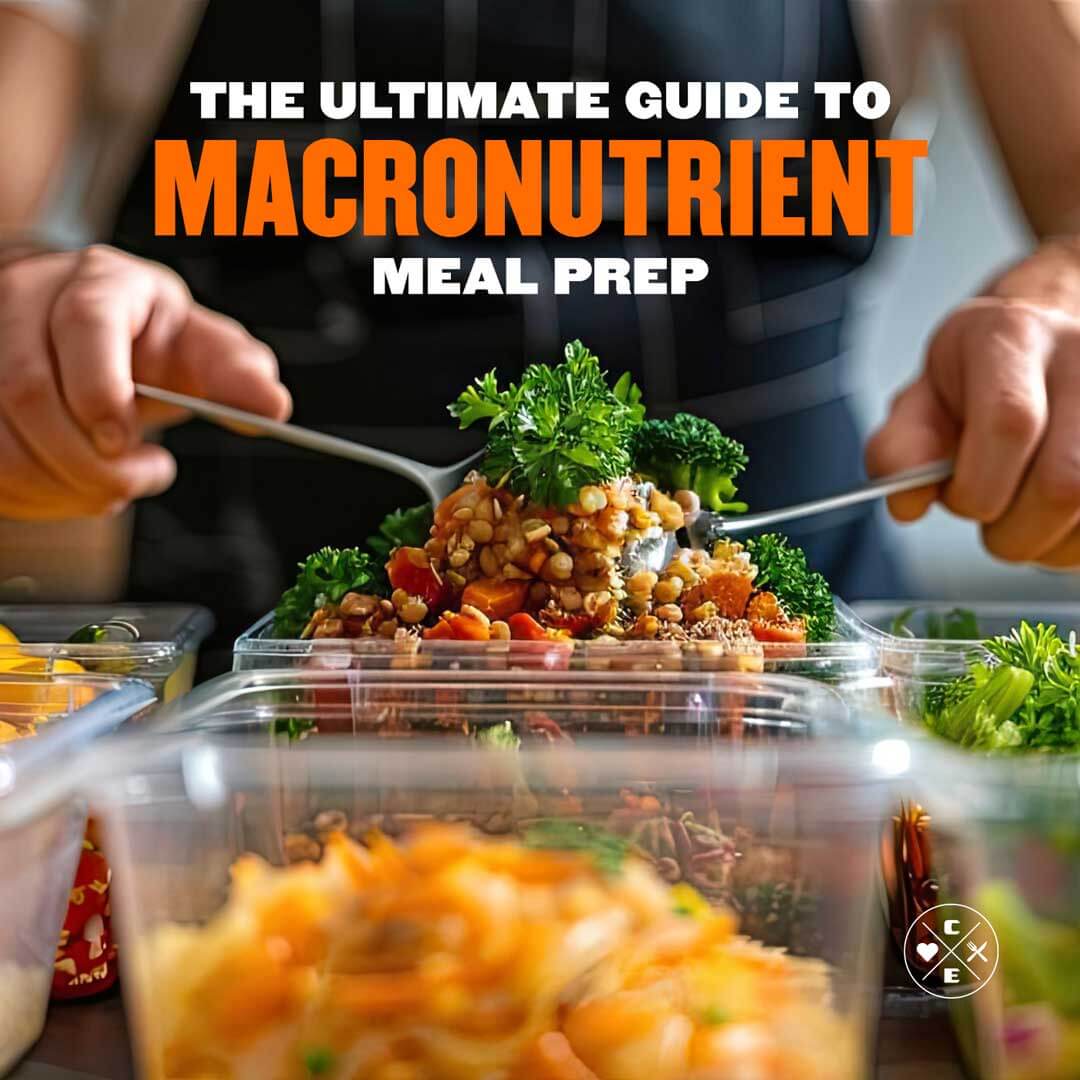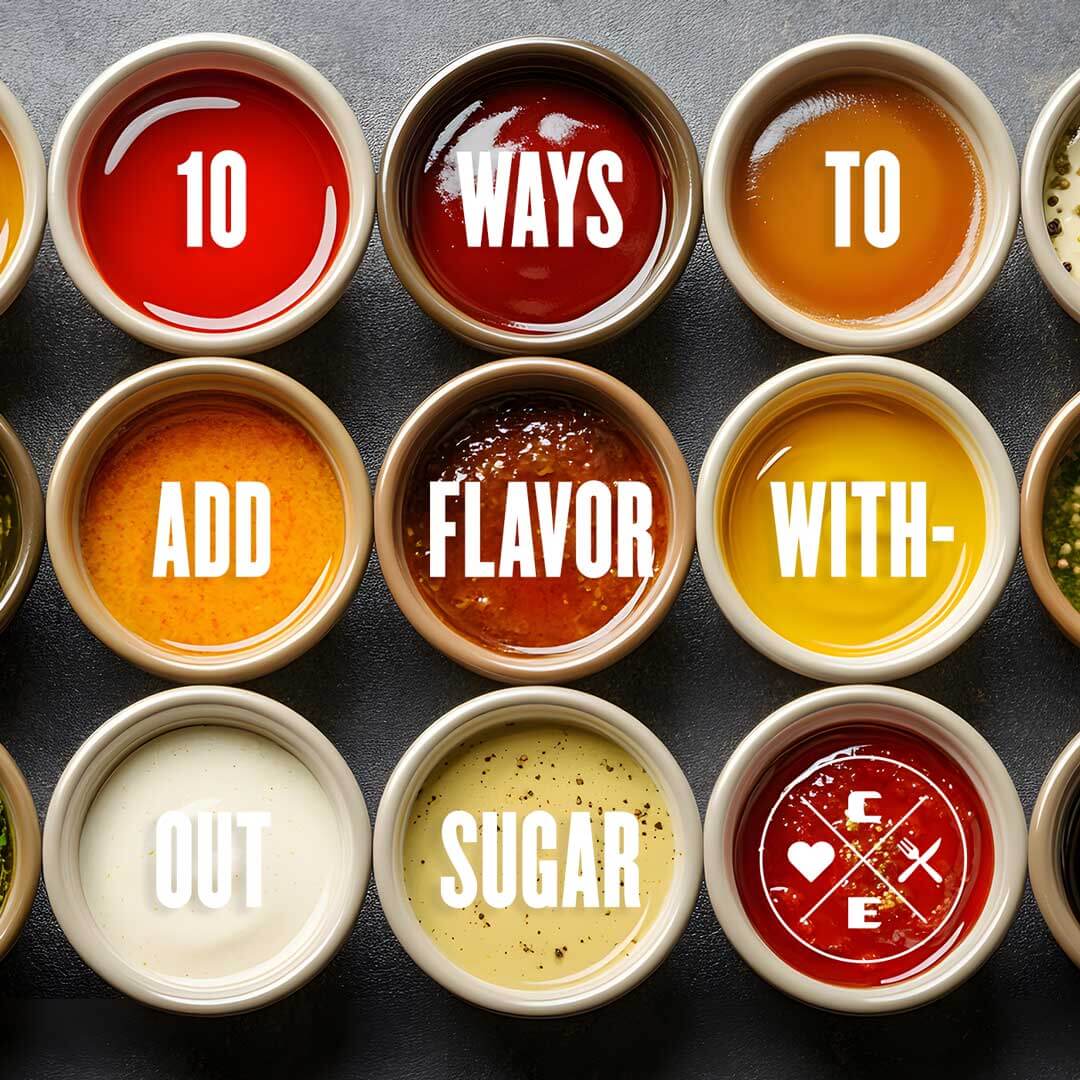
Ultimate Guide to Macronutrient Meal Prep
Jason Nista
Nutrition
|
Healthy Recipes
|
Healthy Lifestyle
8 minute read
Macronutrient meal prep helps you plan meals around proteins, carbs, and fats to meet your health goals - whether it’s weight loss, muscle gain, or improved performance. It saves time, reduces stress, and ensures balanced nutrition. Here’s what you’ll learn:
- What It Is: A system to balance your macros (proteins, carbs, fats) for specific goals.
- Why It Matters: Simplifies meal planning, keeps you on track, and supports fitness.
- How to Start:
- Calculate your daily calorie and macro needs.
- Prep meals in advance with batch cooking or use services like Clean Eatz Kitchen.
- Store meals safely and track progress with apps like MyFitnessPal.
Quick Tip: Use a 45-65% carb, 10-35% protein, and 20-35% fat ratio as a starting point. Adjust based on your goals and track results weekly.
Understanding Macronutrients
Proteins, Carbohydrates, and Fats
Macronutrients - proteins, carbohydrates, and fats - are the building blocks of a balanced diet. Each serves a specific purpose for your body.
- Proteins help repair muscles, produce enzymes, and strengthen the immune system. You’ll find them in foods like lean meats, fish, eggs, legumes, and tofu.
- Carbohydrates provide the energy you need for everyday tasks, mental focus, and workouts. Opt for whole grains, fruits, vegetables, and legumes for steady energy levels.
- Fats play a role in hormone regulation, brain function, and absorbing vitamins like A, D, E, and K. Healthy options include olive oil, avocados, nuts, and seeds.
Balancing Your Macros
Balancing macronutrients is key to making meal prep work for your health and fitness goals. According to the Dietary Guidelines, here’s how your daily calorie intake should break down:
| Macronutrient | Daily Calorie Percentage | Role in Meal Prep |
|---|---|---|
| Carbohydrates | 45-65% | Main energy source |
| Protein | 10-35% | Supports muscles and recovery |
| Fat | 20-35% | Aids hormones and fullness |
The right ratio depends on what you’re aiming for - whether it’s losing weight, building muscle, or improving endurance. Start by calculating your daily calorie needs. From there, focus on protein intake (around 1.6-2.2g per kilogram of body weight) and adjust carbs and fats to suit your plan.
Planning Your Macronutrient Meal Prep
Creating a Weekly Meal Plan
Start by picking 2-3 protein options (like chicken breast or tofu) that match your macro goals and can be seasoned differently for variety. Then, pair them with complex carbs and healthy fats to create balanced meals.
Here’s how to plan:
- Use your macro ratios to figure out your daily requirements.
- Divide those totals into 3-5 meals per day.
- Choose ingredients that fit your portions and nutritional targets.
Shopping for Ingredients
A well-organized shopping trip sets you up for success. Make a list grouped by food categories to streamline the process:
| Category | Examples | Storage Tips |
|---|---|---|
| Proteins | Chicken breast, ground turkey, tofu | Freeze until prep day |
| Complex Carbs | Sweet potatoes, brown rice, quinoa | Store in a cool, dry place |
| Healthy Fats | Avocados, olive oil, nuts | Store as required |
| Fresh Produce | Bell peppers, broccoli, spinach | Refrigerate to keep fresh |
Pick ingredients that can be used in multiple ways. For example, sweet potatoes can work as a side dish or in breakfast bowls.
Once you’ve got everything, it’s time to prep efficiently.
Cooking in Batches for Efficiency
Set aside 2-3 hours on a specific day (often Sunday) for meal prep. Start with foods that take the longest to cook, like rice or roasted vegetables. While those are cooking, prepare proteins like chicken or ground turkey in large amounts.
Batch cooking saves time and minimizes waste. A big batch of chicken, for instance, can be used in salads, wraps, or stir-fries throughout the week.
If you’re short on time, services like Clean Eatz Kitchen offer pre-made macro-balanced meals, including high-protein and customizable options.
Finally, store your meals properly to keep them fresh and ready to eat all week long.
Cooking and Storing Macronutrient Meals
Meal Prep Methods
Once your ingredients are ready, it's time to pick cooking techniques that save time and make meal prep easier.
Sheet pan cooking and slow cookers are great options for prepping macro meals. With sheet pans, you can roast proteins and vegetables together, cutting down on cleanup. Slow cookers, on the other hand, are perfect for preparing large quantities of proteins or tougher cuts of meat with minimal effort.
| Cooking Method | Best For | Time-Saving Benefits |
|---|---|---|
| Sheet Pan | Proteins + vegetables | Easy cleanup, cook everything at once |
| Slow Cooker | Tough meats, legumes | Hands-off cooking, ideal for large portions |
| Batch Cooking | Grains, proteins | Prepares multiple meals, ensures consistency |
After cooking, proper storage is key to keeping meals fresh and safe to eat.
Safe Meal Storage
Store prepared meals in the refrigerator at 40°F (4°C) or lower, and eat them within 3-4 days. For longer storage, freeze meals at 0°F (-18°C) or lower.
"Meal prep is about creating a system that supports your goals." - Lillie Eats and Tells [1]
Follow these tips to store your meals effectively:
- Use airtight containers to maintain freshness and avoid freezer burn.
- Label containers with the contents and the date they were prepared.
- Let food cool completely before storing to prevent condensation and bacterial growth.
When reheating, heat meals to 165°F (74°C) to ensure they're safe to eat. Use minimal water or steam during reheating to preserve nutrients, and try to avoid reheating the same meal multiple times.
sbb-itb-1989a25
Customizing Your Macronutrient Meal Prep
Adjusting for Dietary Restrictions
You can tweak your meals to match dietary needs by swapping ingredients. For example, use quinoa or rice for gluten-free options, and choose tempeh or tofu for vegan-friendly protein. When making changes, keep your macros in check by using tracking tools, adjusting portion sizes, and including nutrient-rich foods.
| Dietary Need | Protein Sources | Carb Sources | Fat Sources |
|---|---|---|---|
| Gluten-Free | Chicken, fish | Quinoa, rice | Avocado |
| Vegan | Tempeh, lentils | Sweet potatoes | Seeds |
| High-Protein | Lean meats | Complex carbs | Healthy oils |
Clean Eatz Kitchen: A Meal Delivery Option
If you prefer skipping the meal prep process, delivery services can be a game-changer. Clean Eatz Kitchen offers pre-made, macro-balanced meals that are portion-controlled and designed for various health goals. This service is especially helpful for those who want nutritious meals without the hassle of planning or cooking.
At $8.99 per meal, it’s a convenient and budget-friendly option for anyone focused on hitting their macro targets. Plus, their clear nutritional labels make it easy to track your intake and make adjustments as needed. You can use these meals to complement your own meal prep or rely on them entirely.
Whether you prefer prepping at home or opting for a delivery service, the goal is to make sure your meals align with your macro plan.
Create a Meal Plan from your Macros
Putting It All Together
Now that you know how to balance your macros and prep meals efficiently, let’s dive into some practical meal plans for specific goals and tips on tracking them effectively.
Example Meal Plans
Your meal plan will depend on your specific goal - whether it's losing weight, building muscle, or maintaining your current physique. Here are some examples to help you get started:
| Goal | Sample Meal | Macros (Protein/Carbs/Fat) | Daily Calories |
|---|---|---|---|
| Weight Loss | Grilled chicken, broccoli, quinoa | 40g / 30g / 10g | 400 calories |
| Muscle Gain | Chicken, sweet potatoes, avocado | 50g / 60g / 20g | 600 calories |
| Maintenance | Salmon, brown rice, mixed vegetables | 40g / 40g / 15g | 500 calories |
To keep things interesting and avoid burnout, rotate between 4-5 meal options that fit your macros. Many people find sticking to similar meals for three days, then switching things up on the fourth day, helps maintain variety without overcomplicating prep. Apps like MyFitnessPal make it easier to track these meals and stick to your plan.
Monitoring Your Macros
Tracking apps like MyFitnessPal and Lose It! simplify the process of monitoring your macros. You can scan barcodes, save your favorite meals, and track your progress toward daily targets. Weekly visual progress, like taking photos, can also help you see how your macro adjustments affect your body composition.
Set aside time each week to review your food logs. Look for trends: Are you consistently meeting your targets? Which meals keep you full and energized? Adjust portions as needed to stay on track. If meal prep feels overwhelming, consider services like Clean Eatz Kitchen, which offer pre-portioned meals with balanced macros. These can be a helpful tool while you work on building long-term habits.
Conclusion
Macronutrient meal prep works best when you balance planning, preparation, and consistency. By learning how to manage proteins, carbs, and fats while using effective meal prep techniques, you can improve your eating habits and move closer to your health goals.
Start small - pick a few ingredients that can be used in different meals throughout the week. Tools like meal tracking apps can help you stay on course as you build these habits.
Efficient planning, regular tracking, and adaptable meal prep strategies can help you create a system that fits your needs. For extra convenience during hectic weeks, services like Clean Eatz Kitchen provide pre-portioned, macro-friendly meals that work alongside your prep.
Keep your system flexible to make it sustainable. Whether you’re cooking everything yourself or mixing in meal delivery options, focus on sticking with your routine rather than overcomplicating it.
Think of macronutrient meal prep as a tool you can adjust to your lifestyle. By sticking to consistent habits and fine-tuning your approach, you’ll stay on track with your nutrition goals and build a system that lasts.
Related Articles
How Meal Delivery Supports Healthy Habits
6 minute read
5 Portioning Strategies to Reduce Food Waste
8 minute read
Sugar-Free Cooking: 10 Ways to Add Flavor Without Sugar
13 minute read


